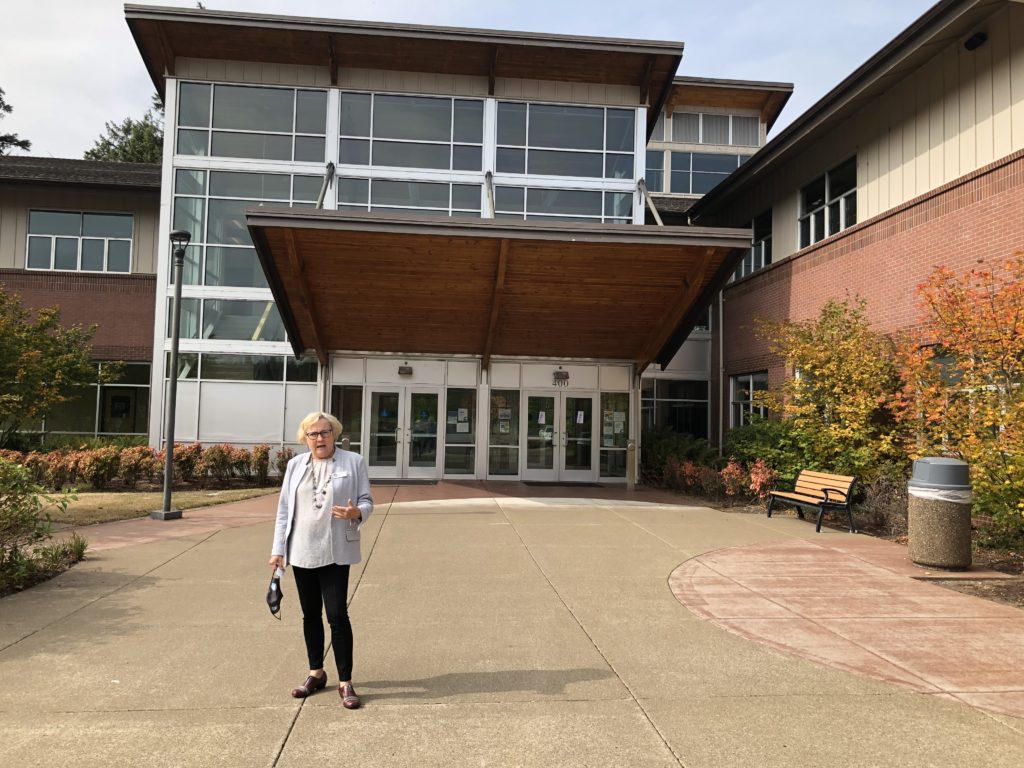
By DANA TIMS/YachatsNews.com
The coronavirus crisis, combined with a sour economy and even the fallout from this summer’s wildfires, are credited with driving down fall-term enrollment at Oregon Coast Community College.
However, administrators say recent course-offering decisions may have blunted some of the enrollment decline, which is affecting all of the state’s 17 community colleges.
With the exception of a small increase at Oregon State University, enrollment declined this fall across all Oregon public colleges and community colleges.
But comparable figures from a year ago show that community college enrollment dropped far more than public university enrollment, according to a new data released by the state’s Higher Education Coordinating Commission.

Data show that the number of students attending Oregon community colleges fell 23 percent from the previous fall. The number of public university students, by comparison, declined by 3.8 percent.
Typically community college enrollment grows during an economic downturn when employment drops and increases during good times when there are plenty of jobs.
Oregon Coast Community College has been gearing for months for a drop off, given the expectation that the coast’s hard-hit economy might make it difficult for students who do have jobs to leave and return to school.
If measured solely by the numbers of students attending the Newport-based school, the 44.8-percent drop – to 516 students currently enrolled from 936 one year ago — is second statewide only to Clatsop Community College’s 52.8 percent drop.
OCCC President Birgitte Ryslinge acknowledged that those numbers point to a steep decline in the “head count” of students enrolled in its programs.
But she pointed to two other factors that she said should be considered when measuring overall enrollment.
The first is that the decline in students attending the college full time – that is, FTE, or full time equivalent students – is far less than the combined numbers of part-time students and those taking non-credit classes. Measured that way, the school’s FTE is down only 9.3 percent compared with a year ago, Ryslinge said.
The average statewide drop in FTE at community colleges is 19 percent.
“Given the situation, while we value offering the personal enrichment activities that make our Community Ed program so popular,” Ryslinge said, “our focus this term had to be on meeting the needs of our certificate- and degree-seeking students.
The second factor is that numbers in the state report were pulled after four weeks of fall term classes. Total enrollment edged up a bit in the following weeks, she said.
The state report added that all known causes for prompting some students deciding not to return or enroll weren’t clear. But, it added, “the recent wildfires may have had an influence, as several institutions geographically near the Southern Oregon, Clackamas County and coastal wildfires this fall show some of the steepest declines in enrollment.
It noted that some of the schools most affected by enrollment declines, including OCCC, were in those zones.
With the decline in full-time enrollment, OCCC is now Oregon’s smallest community college, falling behind Tillamook Bay Community College. Although it is 33 years old, until last February it had been accredited through larger institutions such as Portland Community College. However, after a six-year-long effort, the college secured its independent accreditation Feb. 3.


